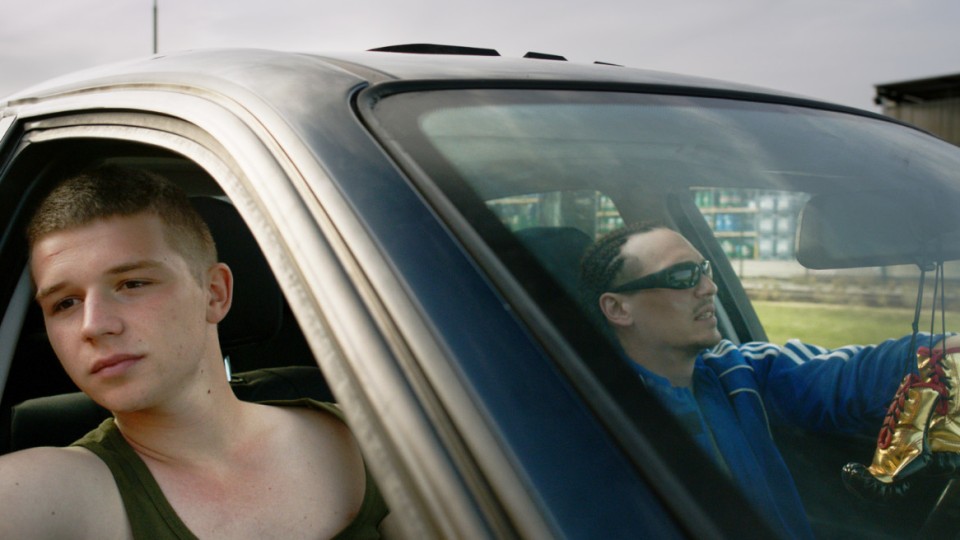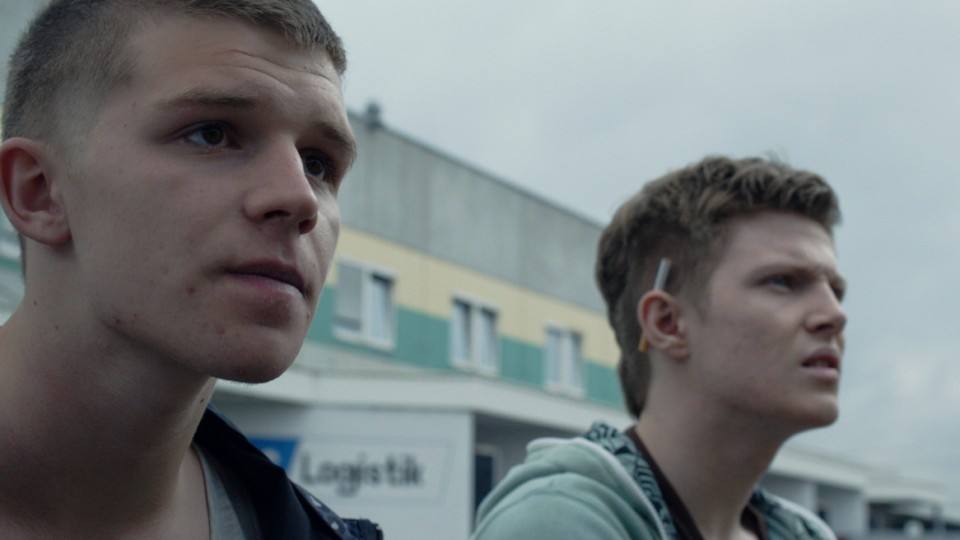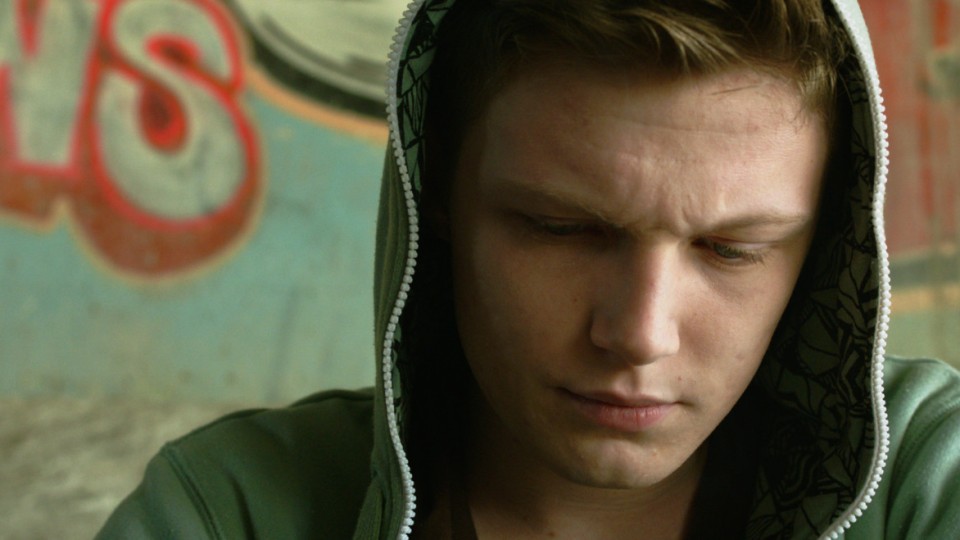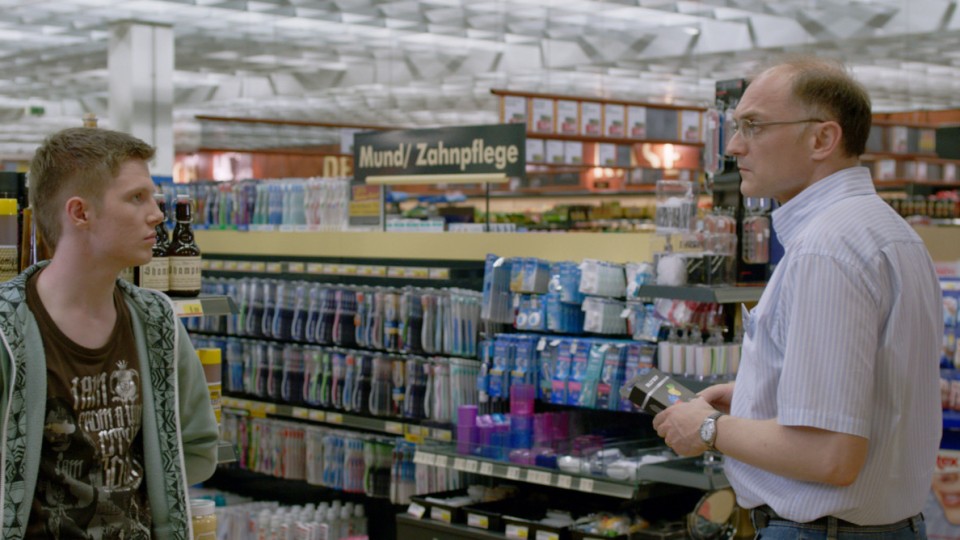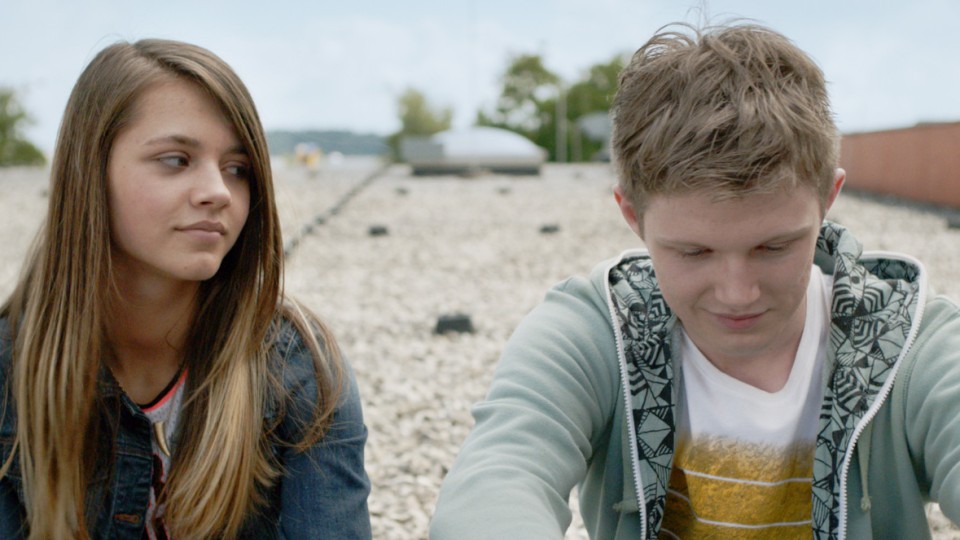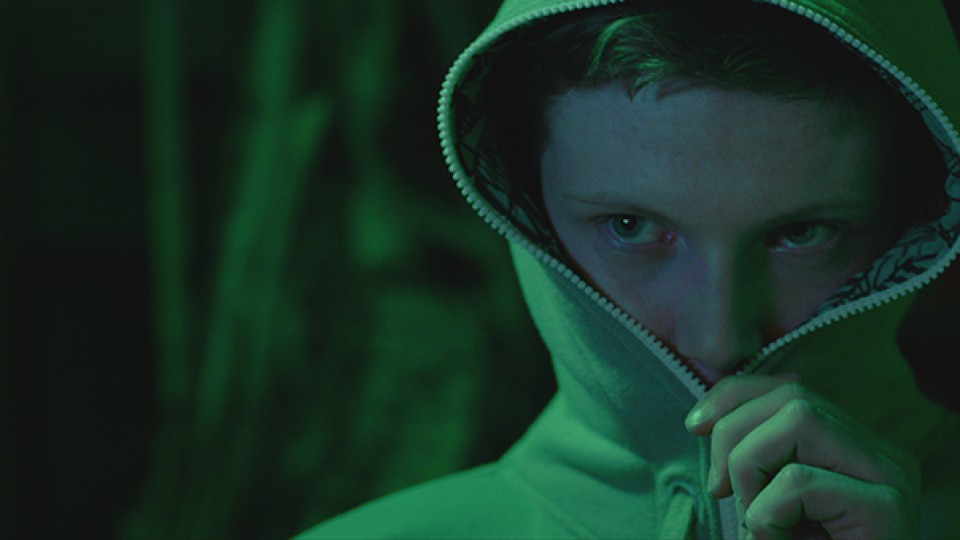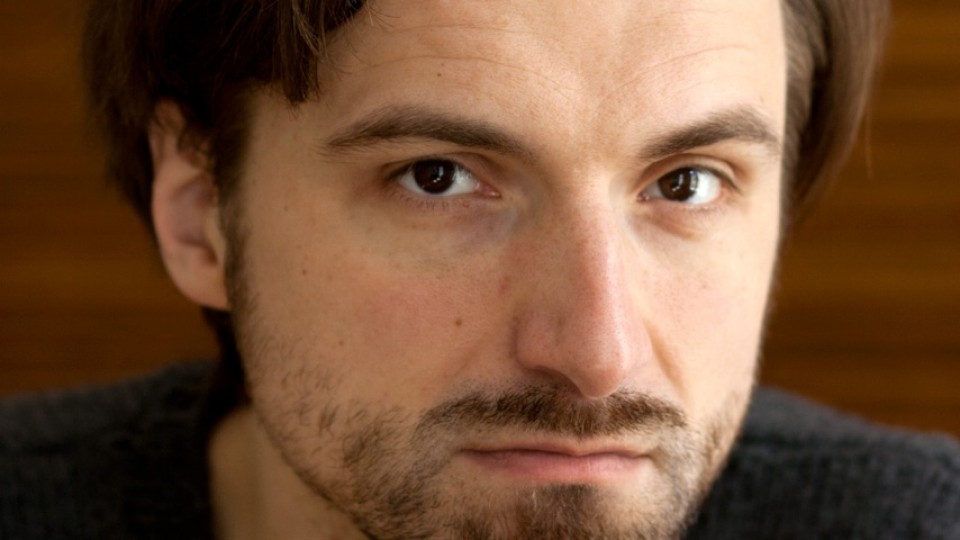Stephan Richter talks about his directorial debut One Of Us, inspired by the death of a 14-year-old boy, who was shot in the back by a policeman while breaking into a supermarket.
One Of Us was inspired by true events. What is the summary of facts that the film is based on?
STEPHAN RICHTER: I wanted to capture a zeitgeist in the first place, the content of which is strongly connected to the case. That was more
important to me than a reconstruction of events all the way into the last detail. In the summer of 2009, 14- year-old Florian
P. was shot in the back by a policeman while breaking into a supermarket. The boy died due to his injuries shortly after.
The case and its public discourse back then really moved me. In the beginning of my research I acted on the facts I had known
from the trial. These were, above all, incidents that had occurred on the tragic night and in regards to them I stayed true
to the facts as far as possible. On the basis of this information I began to develop characters.
How were you able to acquaint yourself with the case and its surrounding circumstances?
STEPHAN RICHTER: One has to realize that this was a circumstance in which no one was delighted about anyone asking questions. Furthermore
it wasn’t until 2011 – two years after the event – that I started working on the film project. At first it
wasn’t easy to get in touch with the individuals involved. I therefore began to research the areas surrounding the trial.
I started with the trial observers of Amnesty International that were present, on account of the breach of human rights that
underlies the case, as well as with several lawyers, in order to obtain an analytical view. Then I started to get interested
in Lerchenfeld and the local supermarket. I spent a lot of time there and saw young people hang around underneath a highway
bridge, not far from the supermarket, and gained insight into the suburban cosmos of the place. Later I encountered individuals
that had been involved and gained access to the documents regarding the trial. These were a little disappointing at first.
I had expected to understand everything after reading them, but in fact I had more questions than before. It's like working
as a detective. Statements partially contradicted one another. On the one hand I had to filter facts and on the other hand
I needed to interpret them. I carved out what seemed to be the most plausible to me. One difficulty while making the movie
was that we couldn’t shoot at the location where the incident happened. Being confronted with a different architecture
makes a huge difference. Therefore, I am careful. My film can only be an interpretation, as too much of the case still remains
in the dark. Nevertheless, I believe that we succeeded in showing an authentic overall picture that illustrates how such a
situation could escalate.
In One Of Us the only reference to the world of grown-ups is the police and the branch manager of the supermarket. Parents and family
are omitted. Why?
STEPHAN RICHTER: I was mostly led by my gut feeling when I decided to dedicate my life to a single subject for several years. Of course
I was searching for a unique point of view and the last thing I wanted to do was to use the case to create a cinema of moral
consternation. I wanted to develop a new perspective on the case, one that allows a new interpretation and offers the possibility
of questioning one’s own point of view. That’s how I came up with the idea of developing the supermarket as an epicenter,
a silent witness and angle on the world of the teenagers and the suburban cosmos. I followed this notion consistently and
that's how the teenagers became such important characters, isolated from parents and family. They are the only characters
besides the people who work at the supermarket, lingering longer than for a quick purchase. The positive side effect was that
there is no trivial explanation for the deed given, such as the family not being intact or the policeman having troubles with
his girlfriend. The supermarket works in a similar way as the donkey in Bresson’s Au Hazard Balthazar, who is a stoic constant in the film. The death of a 14-year-old boy in the supermarket’s colorful world of merchandise
is extremely saddening and in itself so senseless that I chose to follow this impression. The chilly location becomes a metaphor
for the concept of our society and our current way of life: pretty, nice facades, but the system behind them lies in ruins.
And yet we continue. The supermarket functions in the same manner: when something falls over, it is wiped away; when something
is taken, it is re-stocked. Everything remains clean, colorful, and full of false promises. Human emotions ricochet and are
forgotten. Finally, this is also how the case has been handled. Any kind of sensible debate was largely refused. In the end,
the family was guilty, the teenagers in questions were turned into criminals and the broad public was okay with that. The
society doesn’t want anything to change. Don't get me wrong, I am not interested in re-opening the case and asking for
a harsher punishment for the policeman. I’m quite convinced that having to live with such a deed is punishment enough.
There are no winners in this story. What really matters is the way society treated the case. This was a human rights violation;
how can one prevent it? I want to ask the question “Do we want to deal with children and teenagers in Austria this way
and call them criminals?” According to the human rights, they can’t even be criminals. Austria as well recognizes the European Convention on Human Rights, according to this, the boy was a child, and
children ought to be protected. That’s how this case must be processed and that is why I focused on the kids, as it was
more important to me to create awareness for them.
The film opens a parenthesis that forecloses the ending, and closes it at the end with identical images. Why did you choose
this structure?
STEPHAN RICHTER: The opening images that foreclose the ending are images of a standstill. The motionless policeman and the injured youths.
To me, this is the most interesting atmosphere, as it is the moment in which the police officers wait for the police to arrive.
It is a moment of complete motionlessness, in which no one is capable of acting. This moment yet again underlines the senselessness
of the whole. Something has happened and there are only losers. The otherwise so stiff supermarket suddenly shows an idiosyncratic
reaction. Here and there, something trickles away – and that’s it.
The supermarket is brimming with straightness and colorful fillings. In addition to that, there are scenes where an employee,
again and again, throws expired – yet unspoiled – groceries in the trash. Criticism of consumerism becomes a very
present theme.
STEPHAN RICHTER: If you choose this kind of perspective, you have to consistently follow its path. That is the only way this place can develop
metaphoric power. Similar to Bresson’s donkey, the supermarket decides which stories I will see. That, however, is how
this gridlocked suburban cosmos becomes visible. The teenagers are the only ones who slightly attack the system and rebel
against it. In this film, I am trying to reflect the distress I felt, as well as this resistance of society towards change.
In my opinion, the over powerful commercial world of the market is a suitable illustration of that. In 2013, during the EKRAN
workshop for directing in Warsaw, I had a long conversation with scriptwriter Antoine Jaccoud (Sister) on this very subject. Among other things, I explained him that in the end of the story everyone loses. He thought about
it briefly, then said to me: “Yes, but in the end the supermarket must win.”
How were you able to find a supermarket that would provide the right architecture?
STEPHAN RICHTER: That wasn’t easy at all. What’s exciting about these non-spaces is that some people constantly linger there, even
though these are supposedly places in which people come and go. This was supposed to be a place where a teenager would really
want to hangout. Lerchenfeld was definitely an architectural model. The big supermarket chains, however, had very little interest
in participating, and gradually all of them withdrew. But the supermarket we eventually found in Upper Austria worked better
on a cinematic level than I had expected. We arrived and saw – just like in Lerchenfeld – teenagers in the parking
lot, leaving traces everywhere. Especially those flat, long aisles were fascinating to Enzo Brandner, the director of photography,
and me. The big Austrian enterprises don’t have these kinds of shelves; theirs are higher and shorter. We shot a lot
of the scenes at night, rarely when the store was open. Besides, this was a medium-sized enterprise, not bound to a big chain.
The people working at the market in Wels were particularly cooperative. After those six weeks of shooting, we felt like we
were part of the family.
How would one narrate adolescence in such a place? How did the search for images go in this context?
STEPHAN RICHTER: First of all, by my own experiences. I myself grew up in a similar small town and spent my teenage years mostly like that,
even though I was much better off in Ludwigsburg than the teenagers in Lerchenfeld. We used to occupy spaces that anthropology
refers to as “anti-spaces”. These places are a sort of monoculture, with no identity or history beyond their function:
malls, supermarkets or factories. These places are very attractive to teenagers. You can skate, hang around at night, spray,
smoke a joint and have a drink at any time during the day. Through the writing process, I rediscovered a great deal of what
I had done myself. There is a very good youth center in Krems, but in Lerchenfeld – not that far from Krems, where all
of this happened – there is no such facility. In addition to that, this part of town is cut off by a river and surrounded
by highways. Every time I drove to Lerchenfeld, there would be teenagers at the supermarket, sitting near a highway underpass,
smoking Shisha. I just took that as I saw it. It was exciting to think that all of the protagonists must have met through
this place and had maybe already known each other from sight.
How did the language of the dialogue develop?
STEPHAN RICHTER: It took shape in the interplay. I was constantly revising the screenplay until nearly two weeks before we started shooting.
Throughout the continuous work with the teenagers, a lot just came up in an action-reaction-game while rehearsing. I tried
to find out how they speak – in order to refine the dialogue so that the teenagers would be able to get their lines across
with ease. This later became a kind of guideline for all the other actors, who, I think, enjoyed themselves – as they
were actively challenged and could apply themselves. Christopher Schaerf, for example, who plays Victor, is an actor who has
a lot to offer – in general as well as on a linguistic level. I’d always immediately try to write that down. There
was a long rehearsal phase with all of the actors. We rehearsed for 6 weeks at a stretch, but even before that – in my
living room or wherever it worked for us. The young actors, lead by Jack Hofer and Simon Morzé, received an excellent
additional training by Julian Sharp, an acting coach, whose way of working inspired me to bring out the best of the scenes.
The casting of children and teenagers can take an extensive amount of time. How did it go here?
STEPHAN RICHTER: Interestingly, Rita Waszilovics and I found Jack Hofer rather quickly. I could hardly believe that I had found the
right person so quickly, as I had been prepared to cast at least 300 teenagers. Rita was convinced from the very beginning.
We kept on casting, but I realized pretty soon that it was no longer necessary. Jack had made such an effort and I knew that
we would need someone who was willing to rehearse a lot and work on the project for more than a year.
The project benefitted from the START-stipend of the Federal Chancellery of the Republic of Austria. How much did this aid
your idea?
STEPHAN RICHTER: The START-stipend was the whole reason why this film could be realized. In 2011, I submitted this project as a short
film. I come from the fine arts, having studied media art under Bernhard Leitner and Erwin Wurm. I approached the project
without high expectations. Barbara Fraenzen, the head of the film division at the Federal Chancellery, encouraged me to make
a feature length film out of it. Back then I would not have been that presumptuous. I received a lot of support, and they
helped me to establish a contact with the Golden Girls film production company. Arash T. Riahi was the mentor of this project.
Without that stipend, this movie would have never been made.
Your high standards in image composition are probably a result of your background. How did the collaboration with Enzo Brandner
come to be?
STEPHAN RICHTER: Arash T. Riahi recommended him as the cinematographer. What I really liked about his work was this strange, very particular
precision of his hand-held camera. I had strongly imagined my film in this style. Elephant by Gus van Sant as well as We Need To Talk About Kevin by Lynne Ramsay were important reference points for me, because both films deal with traumatic scenes of violence and teenagers.
During the collaboration with Enzo, a formal layer surfaced as well. We had partially created very stiff and precise images
of the supermarket in order to contrast these with the lively world of the teenagers.
Picking a theme in which the police are subject to criticism can be a delicate matter. How did you balance that?
STEPHAN RICHTER: I never intended to go easy on the teenagers or the police, or be too well behaved or diplomatic in order to avoid
criticism. I just worked on whatever I encountered. The gap between teenagers and police has grown a lot bigger since this
case. In the film, I actually wanted to reveal how small the distances between those two sides really are. Both continuously
reside within eyeshot of the other. There are intersections between the worlds of the police and the teenagers, but paradoxically,
all of their communication is either based on the law or takes place across a distance. A good example for that is the ACAB-graffiti
(All cops are bastards) in the film, which, by the way, we found in Wels just as it was. I want to point out that this is
a wasted opportunity. There is nothing to be said against approaching the kids and asking, “How are you?”
Maybe I am showing something that is critical of the police, but it’s not hostile towards them. Any sensible police officer
would agree that a lot went wrong in the case of Florian P. and that there needs to be some form of processing.
A dramatic core of the narrative is the final scene in the supermarket. What did you consider here?
STEPHAN RICHTER: There was a well-known fact: the teenagers were in a party mode and had been up to all kinds of mischief that night.
Furthermore there was the depiction of a planned burglary, which is nonsense in my opinion. I’ve seen many supermarkets
and eventually came to one realization – you can’t get into a supermarket with a screwdriver. That’s an impossible
feat. While researching I would ask the managers of various supermarkets: “How would you commit a burglary?” and
most of them hinted at broken rolling gates or something similar. In Wels, where we were filming, an employee simply gestured
towards a garbage container, through which one could get inside easily. Obviously, this would be alluring to a 14-year-old
teenager and that’s where, to me, the line is drawn with criminal activity. There’s a difference between advancing
with a crowbar and a roto hammer and spontaneously remarking, “Hey, awesome, I can get inside.”. Who wouldn’t
want to be inside a supermarket at night? It felt important to give this intrusion something casual, something the viewer
might enjoy effortlessly, without any kind of criminal intention. Most of all I was irked by the fact that there was constantly
the talk of criminals. At this age, something like that isn’t criminal. There’s just this vast juridical difference
regarding the use of firearms when there is a criminal intention. That’s why the case was that dramatized with expressions
such as “premeditated” etc. I also tried to clarify the level of stress that was given on the side of the police,
the moment they step inside the supermarket. The supermarket is a labyrinth and walking around it in the dark, assuming that
someone might be out there, is an upsetting situation. In addition to that there are interpersonal factors, such as the scene
in which the policewoman first calls the manager and her colleague feels thwarted, proceeding with an order to enter. He doesn’t
want to appear overruled or unprofessional in front of the young supermarket employee. That’s why he goes inside. The
correct procedure would have been: stay outside, call the store manager or send in a police dog. Florian P. would have gotten
away with it, his parents would have given him a piece of their mind, and he would still be alive.
A recurring theme – a metaphor for freedom and self-determination – is the car ride that is shot in a very interesting
way. Does the car symbolize a counter world?
STEPHAN RICHTER: The supermarket and the car are actually inextricably linked. Beyond that, it’s incredibly awesome for teenagers
when someone has a car. In this case it’s Victor who gets to score. I also believe that in correlation with the night
in question, the car plays a crucial role. From the moment Julian steps into that car, he is trapped. The car is an exciting,
tight space dominated by different rules. For Victor, who can hardly gain foothold in life, the pimped BMW is all he has left.
It’s important to him that he can use it to impress 14-year-olds and keep his status. And then there’s the scene
in which the police officers are sitting in their car and it becomes clear how similar these two worlds are. They, too, are
spending a lot of time sitting and driving around in their car.
How did you come up with the title ONE OF US?
STEPHAN RICHTER: Finding a title was difficult. We worked on it for a while. Initially, the project was titled We Were Here. I liked its use of “we”, which described a community and immediately throws up the question of subjectivity and
whether that includes the viewer. One Of Us has a similar effect; it’s just a little bit more provocative. Who is “one of us”? The policeman? The boy?
The point I’m trying to reach is that there is a community here that doesn’t even realize it is a community. They
all live, in classic capitalist manner, in their own cosmos apart from one another. We judge Florian P. and the policeman
quite harshly, even though they actually belong “to us”.
Sound, music and silence play a large role. What were your demands here?
STEPHAN RICHTER: I collaborated with Maja Osojnik and Matija Schellander, as I wanted to treat sound design and music as equals. Supermarkets
are places that are constantly humming and hissing and creaking. I decided that before this becomes a disadvantage, we would
use this circumstance to underline it as a dramaturgical element. A supermarket creates its own atmosphere. After a few days
of shooting we were completely exhausted: the cold light, the permanent noise, the strange climate – it gets to you.
We wanted to express this atmosphere through the sound. I’ve always liked Maja’s and Matija’s free interactions
with music and sound and the two of them were enthusiastic about the idea.
Were you also trying to provoke a discussion with this film?
STEPHAN RICHTER: To be honest, after the press coverage at the time and the current atmosphere in this country, I have a hard time knowing
what I’m wishing for. This is a story that concerns real people. A new media commotion, which I could easily handle,
has totally different consequences for different people. I’m not trying to conjure a new confrontation; exactly that
has already happened and has wrongly injured many parties involved and made their lives more difficult. I recall Michael Jeanneé’s
atrocious quote in the Kronen Zeitung: “If you are old enough to steal, you are old enough to die.” On the opposite side there is an offended and angry
youth generation who has lost faith in the system. What’s the use of this? Personally, I think it would be more
important to initiate a discussion about youth employment and police work, and to pursue the question on how to create intersections
between these two. That would be productive and there is a major need for that. Whether you are looking at Lerchenfeld near
Krems or Vienna – you’ll find the same problems everywhere. Kids who are not getting enough room for self-expression
or appreciation. This isn’t a new problem. I hope that one or the other will adopt a new attitude towards this incident
and realize that they don’t want such conditions within the society they are living in. This border must not be crossed
again. An original precedent was created, after all. If there are no consequences, will we, the next time a 14-year-old gets
shot, again say “He was a criminal, so this is alright”? Or will it take even less next time? The potential for
conflict remains after all. What is the state permitted to do? Where is it entitled to act? Where does this obedience come
from that allows people to assume: A policeman did that, so it must be right. It’s about raising awareness about what
happened, and that we, as society, certainly do not want that. Most people are not aware that a child was shot dead that night.
But that’s a fact, no matter how you look at it.
Interview: Karin Schiefer
August 2015

